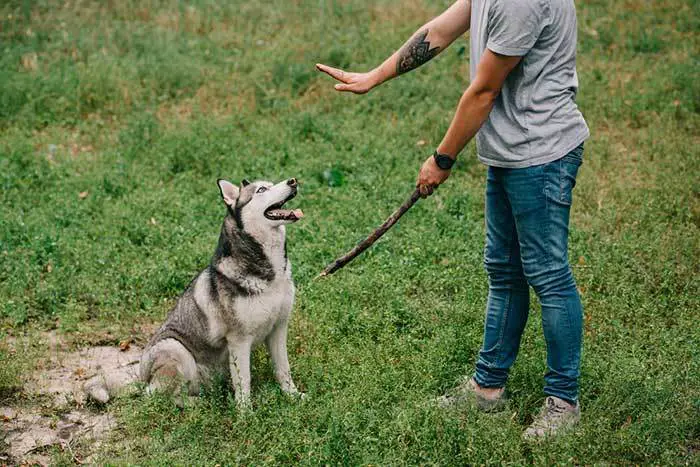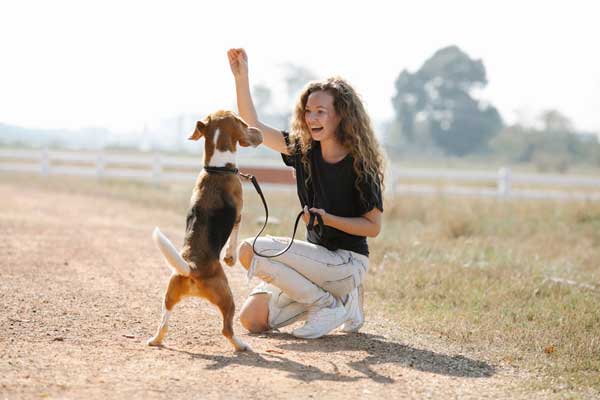When training dogs, especially stubborn or assertive breeds, grasping these unique challenges is key.
Research shows behavior issues like aggression are top reasons for relinquishing dogs to shelters, underscoring the need to tackle training proactively. Per the CDC, around 4.5 million dog bites occur yearly in the US, with 800,000 requiring medical care. Though not all bites stem from aggression, they highlight addressing training hurdles and promoting responsible ownership to curb potential aggression risks.
Certain breeds prone to challenging behaviors like excessive barking or reactivity pose distinct obedience and socialization obstacles for owners. Thus, exploring tailored training methods and legal considerations becomes crucial for responsible ownership and mitigating potential risks with difficult dog breeds.
Understanding Dog Breeds
Ensuring successful training outcomes necessitates delving into various breed intricacies before starting any regimen. This involves comprehensively researching breed-specific characteristics like historical backgrounds, inherent temperaments, and energy levels, which shape behavior and training responsiveness.
For example, herding breeds like Border Collies may exhibit strong chasing and controlling movement tendencies due to historical roles. Some dog breeds, like Beagles, display a more independent nature driven by their keen sense of smell.
Understanding breed-specific tendencies is crucial to tailor training approaches that suit each dog’s unique needs, thereby maximizing effectiveness and fostering a harmonious human-canine relationship. According to the legal team at Thomas Law Offices, when a person is injured at your property due to your negligence, they are entitled to compensation. A competent law firm will fight for their rights, ensuring they get the benefits they deserve.
Positive Reinforcement Training
Positive reinforcement training is a cornerstone for addressing diverse breed challenges. This rewards-based operant conditioning method has proven remarkably effective in encouraging good behaviors while mitigating problematic ones. Strategically using treats, verbal praise, and engaging play as rewards, owners can incentivize pets to follow commands.
For example, treat-rewarding a Labrador Retriever for sitting on command reinforces the desired behavior, encouraging willing repetition. Leveraging positive reinforcement builds a cooperative, mutually rewarding bond, facilitating smoother training and enhancing obedience across breeds.
Consistency and Patience
Consistency and patience underpin effectively training challenging breeds. Adhering to a structured, consistent regimen establishes clear boundaries and expectations, reinforcing desired behaviors over time.
Consistency involves regular training sessions and uniform commands, rewards, and consequences, ensuring clarity for the dog. Patience is equally crucial, as training progress may be gradual, requiring owner perseverance.
Approaching training calmly and avoiding frustration fosters a conducive learning environment, with dogs being highly attuned to owner emotions. Additionally, remaining patient encourages pets to stay receptive and engaged, thus leading to more successful behavior modification and obedience training.

Breed-Specific Training Techniques
Dogs have different traits based on breed; thus, training them needs special techniques. The techniques work on each breed’s special habits. When owners understand a breed’s natural talents, they increase the chances of success in the training. The lessons are to be designed around the dog’s natural strengths and inclinations. For some breeds, engaging their natural instincts with scent games is helpful.
As an example, Beagles are known for their excellent sense of smell. So playing scent-based games gives them mental stimulation and allows their hunting instincts to come out.
Also, agility training challenges breeds like Border Collies physically and mentally. It lets them burn off energy and use their intelligence in a structured way. This promotes focus and obedience. When dog owners customize training for a breed’s traits, learning improves. And behavior modification and skill development see better results.
Seeking Professional Help
If training difficulties persist, getting professional help is invaluable. Certified dog trainers and behaviorists have expertise assessing each dog’s unique needs and breed-specific challenges. With personalized evaluation, they pinpoint underlying behavioral issues. And design tailored training programs like dog therapy treatment to address them effectively.
By working with a pro, owners gain specialized knowledge and guidance. This increases the likelihood of successful training outcomes and enhances the bond between the dog and its owner.
Socialization and Exposure
Socialization and exposure crucially shape a dog’s behavior, especially breeds prone to issues. Introducing the dog to diverse environments, people, and other animals at a young age fosters adaptability and sociability.
Through positive socialization interactions, dogs can confidently navigate situations, thus reducing later fear-based responses or aggression. Furthermore, early social contacts expand a puppy’s acceptable behaviors. Thus, interacting with many people and things leads puppies to grow calm, not anxious. New environments, on the other hand, enable dogs to be at ease. Besides, having varied experiences lets dogs get comfortable with change, helping dogs behave wherever they roam.
Exercise and Mental Stimulation
Most dogs are always energetic when well-fed. Regular exercise and activities that challenge their minds can prove essential for certain dog breeds. These aspects ensure their physical well-being and mental health.
Exercise, such as walks, runs, and play sessions, helps expend pent-up energy. This not only promotes a healthy lifestyle but also prevents destructive behaviors caused by boredom or excess energy.
By staying active, they keep fit and well-adjusted to the environment and challenges. Exercise outlets excess energy that creates bad behaviors when cooped-up. In addition, mental games also stimulate dogs so they don’t get bored and act up. So, introducing puzzle toys and training drills challenge clever canine minds with rewarding enrichment. Both physical and mental activities balance a dog’s needs for satisfaction and health.

Monitoring Progress and Adjusting Strategies
A dog owner has to monitor with keenness how the dog reacts during the training exercise by paying attention to small changes in behavior that show improvement or regression in response. With active progress monitoring, the owners can establish a pattern for those working well and requiring change. Such flexibility allows the alteration of training techniques to suit individual needs and the learning style of each dog. The swiftness is maintained through the training journey by regularly assessing and adapting them, as they could bring the desired outcome in the behavior from the training process.
Certain canine breeds face hurdles in training responsiveness and obedience. Owners must stay patient, persist with lessons, and understand breed-specific qualities and legal policies.
Additionally, positive reinforcements and seeking expert advice can overcome difficulties, fostering strong human-dog bonds. While training proves effortful, the journey culminates in a well-behaved, beloved companion, making all endeavors worthwhile.

